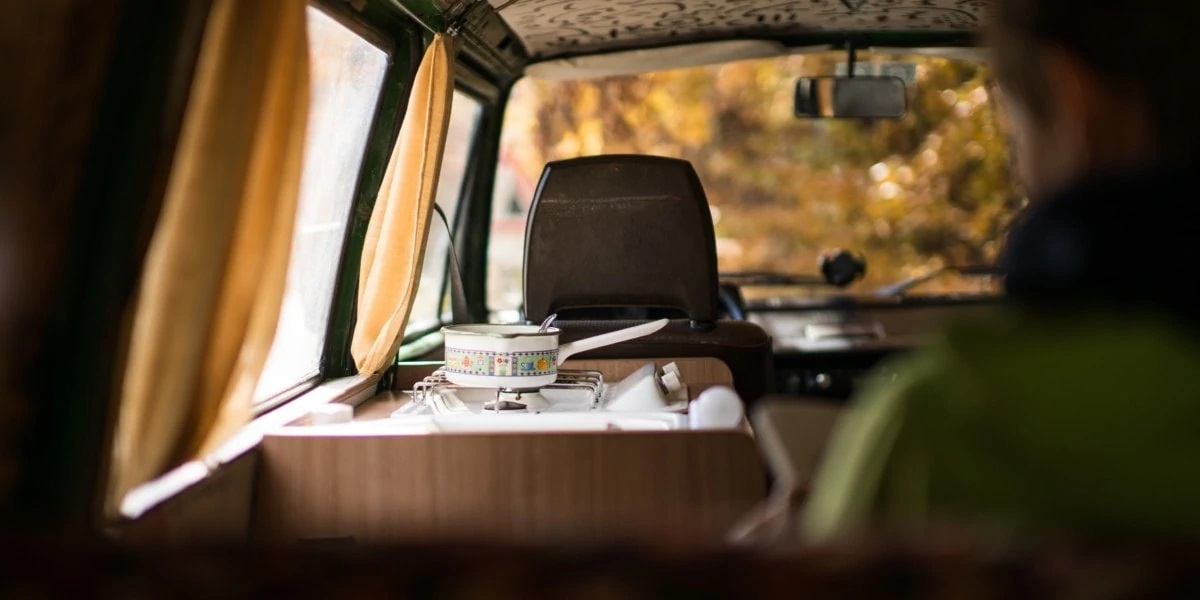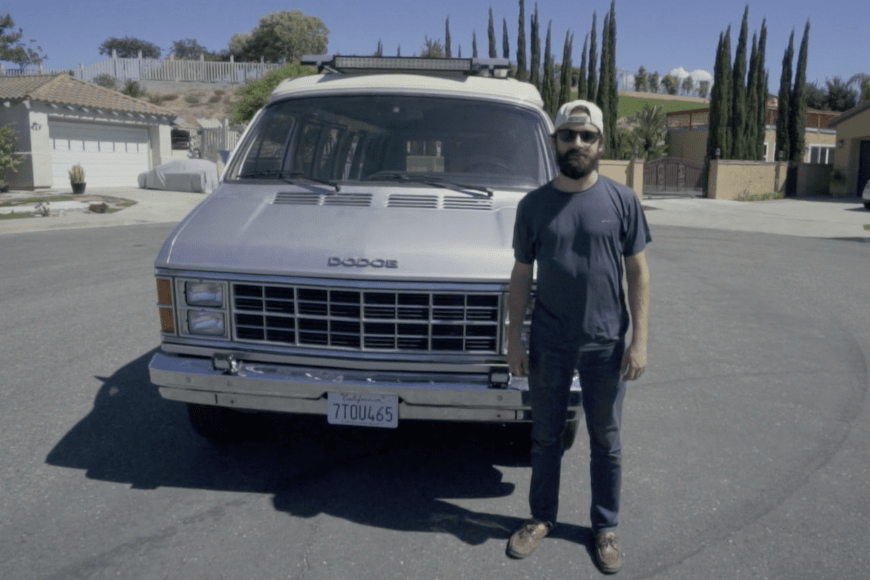
I’ve been living, climbing and hiking out of the back of my boyfriend’s 2009 Toyota Tacoma for the past two months.
We’ve shredded our skin on the Buttermilk’s crystals, peered into the Canyonlands, strolled along the Grand Canyon, and clipped bolts next to free-grazing goats at Horseshoe Canyon Ranch. We’ve also learned a lot about the logistics of living with a basic truck topper as the “roof over your head.”
Our setup
Overhead is a basic, fiberglass topper, which costs $600, including installation. Aluminum caps are often a little less expensive; however, they are not as warm and are much louder during precipitation.
Inside is a 4ft x 6ft x 13in table-like platform (our “bed”) with 4x4s for legs, 2x4s as a frame, and a thick slab of plywood on top, which is sturdy enough to support two people without additional slats underneath. I’d recommend lying a cheap twin flat sheet over the plywood to protect your sleeping bags from snagging on the rough plywood, and sleeping on an Organic highball bouldering pad (our mattress), which is surprisingly comfortable.
Using this setup, you’ll have about two feet of space between the pad and ceiling to sleep in. To put that in perspective: my broad-shouldered 6’1” boyfriend can just barely lie on his side.

Underneath the platform, our clothing, food, and kitchen supplies are stored in four 66-Quart rolling bins that we stack on top of one another and then roll in and out from under the platform. We push these all the way toward the front of the truck bed when they’re not in use. The cooler, rope bag, and two fabric storage bins housing our climbing gear are stored at the backend of the truck bed. Extra backpacks, my yoga mat, and a foam roller are stored along one side of the platform.
Compared to outfitting oneself for van life, setting up the truck was relatively quick and inexpensive. Budget about an hour for the truck topper installation, and at least six hours to build (and rebuild … ) the platform and organize the truck bed. Essentially, you can turn your truck into a home-in-a-day if you’re efficient. And compared to the $1500 to $3000 you’d spend renovating a van, the roughly $850 you’ll drop for a topper, wood, storage bins, and a two burner stove is a lot easier on one’s bank account.

However, before you start looking for truck toppers on Craigslist, you should understand what you’re getting yourself into (i.e., keep reading).
Here are seven things you should know before giving truck life a try
1. You’ll battle condensation every night
Leaving the topper windows cracked overnight essentially does nothing to prevent enough moisture build-up to make icy water droplets falling from the sopping roof your daily alarm clock.
Leave the back windows cracked while you drive to let things air out—otherwise, you’ll be battling mold too.
2. There is even less room for activities than you’d think
Once inside one’s sleeping bag, the truck is cozy and comfortable, but army crawling in and worming my way out often involves getting my hair caught on the rough ceiling and/or hitting my head.
Not rushing to get in and out of one’s sleeping bag is key. Having to pee at 2 a.m. is quite unfortunate.
3. Your new biggest fear: rain
Unlike van life, one cannot simply slip from the driver’s seat to the back without exiting the vehicle. Running through a downpour to struggle into my sleeping bag at night is my biggest fear.
Truck toppers are not 100% waterproof, leaking a little at the back, so make sure to store your clothes away from the truck flap and preferably in a waterproof plastic bin. Pull under covered gas stations if you need to get something out of the back while traveling in the rain, and find pavilions to cook under during meal-time monsoons.
4. The cab will house most of your daily essentials
Even with large rolling bins for your extra clothes, camp stove, and canned goods, your daily climbing and sleeping attire, favorite snacks, basic toiletries, can opener, and other often-used items will inevitably wind up behind the bench seat, in the cup holders, and on the floor of the cab.
5. You go to bed really, really early
Especially if it’s late fall, winter, or early spring, once the sun goes down and dinner is done, you inevitably start heading toward your sleeping bag.
With half your stuff in the cab (see number 4 above) and little headroom in the back, it’s unlikely that you’ll stay up late reading—what I thought I’d be doing most nights—and the idea of sleeping in and wasting precious daylight during these chilly months is enough to justify curling up for the night at 7:30pm.
6. You don’t always love “living the dirtbag dream”
Most days you’re in love with the mountains, hand cracks, and boulders, but not every day is sunny, sending-filled happiness.
You get flat tires, it pours mid-way through cooking dinner, you get lost on the way to the crag, you lose feeling in your fingers cleaning your dishes in freezing canyons, you bang your head twice getting out of your sleeping bag, and sometimes you just want a hot shower and a couch. But, you’re a lucky duck living the dream and should love every minute of it, right?
Not if we’re being realistic. Everyone has hard days, even while living and climbing in their favorite places on earth. Accept the hard days, assess why you’re feeling down, and then make little changes to fix the little things that are bugging you—whether you need to treat yourself to chocolate once a week or find a better place for your extra hiking boots.
Never underestimate the power of morale and your ability to boost it.
7. Trucks are not the best long-term option
It’s good for a few months, but, if you’re planning a six-plus month-long trip, the ability to cook inside, the added space and sleeping head room, and ease of getting in and out of bed makes a van the preferable long-term “mobile home.”
However, if you own a truck and would like to purchase (or already have) a basic topper, the amazing places that living in your current vehicle will allow you to see far outweigh the above discomforts.
Explore More
Related articles you'll loveBest Van Conversion Equipment: Top Picks for Solar, Refrigeration, Kitchen, More…
Van Life Profiles: Stories of Living the Road
Build Chronicles: Step-By-Step Details of Van Conversions
Vanvaya’s Most Popular Articles Ever











